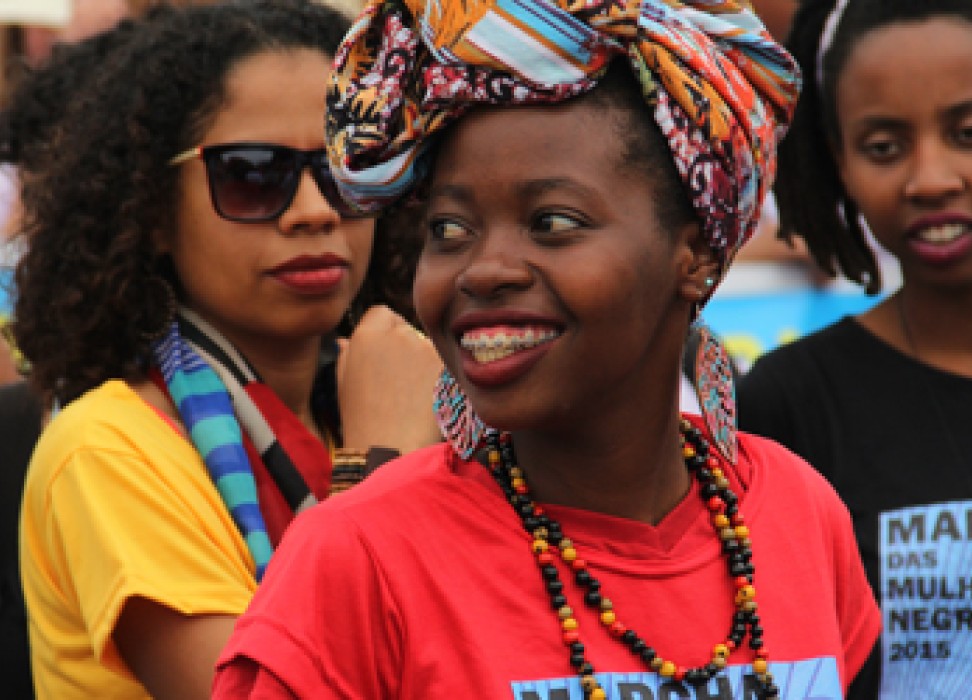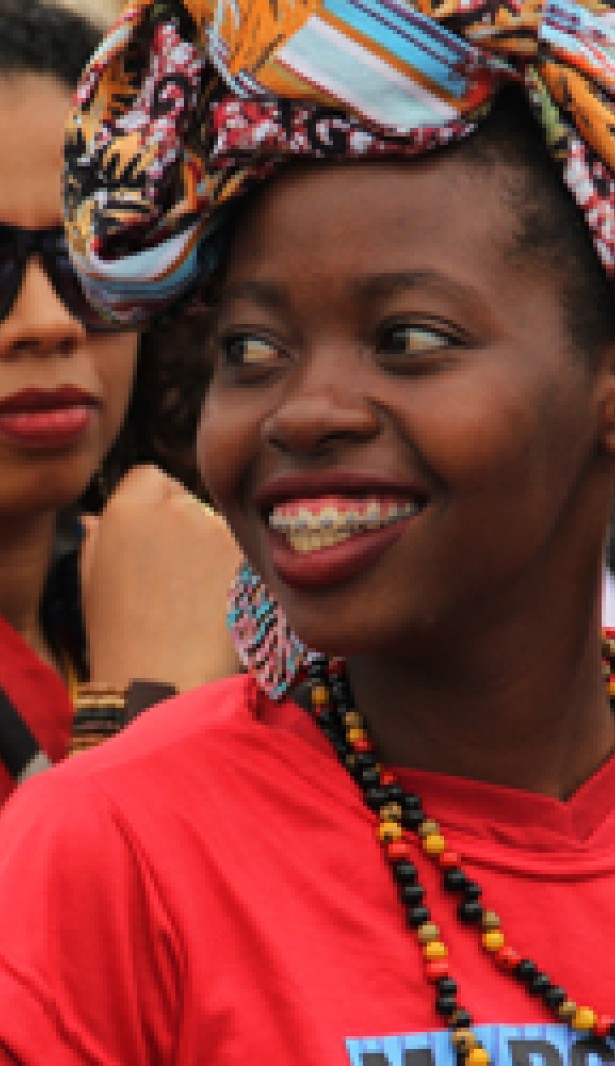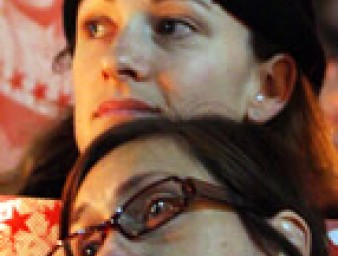Gender discrimination, racial discrimination and women's human rights
29 September 2017

In France, an experiment showed that a woman with a Senegalese sounding name had only 8.4 per cent chance of being called for a job interview, as compared to 22.6 per cent chance for women with a French-sounding name.
According to research by the European Union Agency for Fundamental Rights, attacks against women whose appearance suggested they are Muslim have been reported in a number of European countries, while the majority of islamophobic acts committed in 2015 - 74 per cent in France and 90 per cent in the Netherlands - targeted women.
These were examples of discrimination against women around the world given by Deputy High Commissioner for Human Rights, Kate Gilmore, at a panel discussion at the Human Rights Council that analysed the impact of intersectionality on women’s rights. Other figures can be found in a report published this year by the UN Human Rights Office.
“The distortions of opportunity and personal progress that discrimination introduces is never down to just a single dimension of our identities,” said Gilmore. “For those most affected by discriminatory practices, it is always multiple and intersecting forms of discrimination that create the most intricate, sticky, choking web of deprivation, of denial of rights, which in turn hinders, undermines, obstructs, oppresses.”
The UN Human Rights Office has described intersectionality as the consequence of two or more combined grounds of discrimination. The concept also addresses the manner in which these combined factors contribute to creating layers of inequality.
Gilmore identified these systems of discrimination as being based, among other vital dimensions, on racial or ethnic origin, nationality, migration status, age, disability, and minority status. These factors, she said, should be considered when tracking progress on women’s rights in the context of the 2030 Development Agenda.
“These inequalities intertwine with multiple forms of discrimination to bind the feet and gag the mouths of millions of women and girls the world over. Women from minority groups are more likely to live in poverty,” Gilmore added.
“Being poor, [belonging to a minority] and female, their socio-economic status infects every sphere of their daily lives - their access to health services, their progress in education, their right to shelter, to live free from fear, their participation in their communities.”
Hilary Gbedemah, member of the Committee on the Elimination of Discrimination against Women (CEDAW), pointed out that intersectional and compound discrimination contributes to make women’s position more precarious, and that it is an impediment to harnessing the totality of human resources needed for a country to develop. CEDAW has observed that this type of discrimination affects mostly women belonging to racial or ethnic minorities and indigenous women.
Discrimination is the lack of opportunities for status attainment, pointed out Carlos Augusto Viáfara, professor at the University of Valle in Colombian. Taking as an example a study undertaken in his country, Viáfara said that Afro-Colombian women were more likely to be born poor and thus their start in life came with a disadvantage.
The Status Attainment Model proposes that social origin determines educational opportunities and attainment, which in turn affect job opportunities. Viáfara’s study analysed school dropout levels in women and girls based on ethnic origin. Sixty-six per cent of women of African descent in Colombia were more likely than white women to drop out in the ninth grade. Further, 58 per cent were less likely to obtain a university degree compared to white men, and 32 per cent less likely than black men. He observed similar outcomes for comparisons inside the labour market and in the health care system.
“Because of social stratification women of African descent will face more disadvantages. Even though they are born poor, sometimes their educational attainment is high. But a cumulative disadvantage does not allow them to have good job opportunities; those disadvantages will grow as they go through life,” Viáfara said.
“The natural answer to this situation is affirmative action policies which don’t only focus on gender: we need policies that focus on women of African descent to break the vicious circle of cumulative disadvantages.”
For researcher and former UN Youth Delegate for Belgium, Warda El-Kaddouri, islamophobia intertwines with gender norms, thus exposing young women who wear religious or cultural symbols to discrimination.
“I believe women of colour who are visibly Muslim are one of the most vulnerable groups in the West to face multiple forms of discrimination such as sexism and racism,” El-Kaddouri said. “Several reports have shown that gendered and sexist inspired islamophobic hate crimes have increased, mainly in public spaces and especially when they wear hijab.”
The Committee on the Elimination of Racial Discrimination has played a pioneering role in studying human rights violations through the compounded effects of intersectionality, pointed out Anastasia Crickley, Chair of the Committee.
Crickley said, the Committee has been able to indicate to States the interaction between racism and gender discrimination, urging them to focus on special measures and targeted interventions to address that form of discrimination.
The Committee also highlighted States’ insufficient attention to conventions dealing with the juncture between racism and gender discrimination. “This results in inappropriate responses to specific challenges by women facing intersectional discrimination,” she said.
Crickley added that although studies remained scarce, information presented to the Committee had confirmed its concerns: the sexual violence against women and members of a particular ethnic group in detention or during armed conflicts; the abuse of domestic workers employed abroad; and the stigmatisation in some societies of women victims of rape belonging to ethnic minorities, and the challenges they face in accessing justice.
29 September 2017

